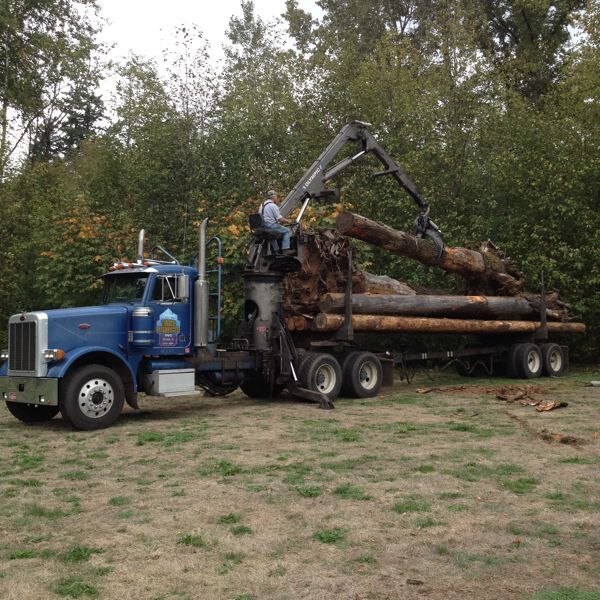Approaching Elk Rock Island
Published 12:00 am Tuesday, November 17, 2015

- Construction workers move logs during restoration of Milwaukie's Spring Park.
Relatively few Oregonians have visited or even know about Elk Rock Island, a gem of a natural area that’s a forested remnant of an ancient volcano.
Trending
It’s accessible only from the Willamette River or a land bridge from Milwaukie when the river runs low.
Now there’s a new reason to visit the area: Milwaukie’s painstakingly restored Spring Park that serves as a gateway to Elk Rock Island, offering glimpses of a bald eagle’s nest and stunning views of the Elk Rock cliffs across the river.
Residents in the Island Station neighborhood have been working on the park since 1994, says Lisa Batey, a neighbor advocate and recently elected Milwaukie City Council member.
Trending
“This is our neighborhood park; people walk their dogs here and it draws people to the neighborhood,” Batey says.
But the site had potential as a regional destination and natural area worth preserving.
Over the years, the neighbors got some reinforcements from an impressive array of agencies and nonprofits: The North Clackamas Parks & Recreation District, Metro, The Nature Conservancy, Oregon Department of Fish and Wildlife, Oregon State Parks, North Clackamas Urban Watersheds Council, Oregon Wildlife, Portland Parks & Recreation, the U.S. Forest Service, and Willamette Riverkeeper.
“We have oaks, an alcove backchannel, a cottonwood gallery, wetlands, a floodplain and uplands,” says Tonia Burns, natural resources coordinator for the North Clackamas Parks & Recreation District. “It is a unique conglomeration of important habitat types.”
Community volunteers and those groups have restored a half-acre of wetlands along with Oregon oak and cottonwood habitats at the 7-acre park. They’ve built a new hiking trail, added a wildlife-viewing overlook, interpretive signs and trail directional signs, and created 12 large structures to improve fish habitat.
Now, after 20 years of planning, community work parties and major construction, Milwaukie’s Spring Park is ready for its close-up, and the community is invited to plant native species and add the finishing cosmetic touches on Nov. 21, before the park is reopened to the public.
Lots of partners
A key turning point was when the North Clackamas Parks & Recreation District became involved, adopting the Spring Park Master Plan in 2006. The first stage in the restoration was creation of a “pocket park,” a play area at the park entrance completed in 2010.
The next phase began in early 2015, with the much more complicated restoration of inner Spring Park, Burns says. Goals were set to restore the wetlands, enhance fish habitat and realign the old trail in the park.
Human disturbances have negatively impacted sensitive areas in the park interior, eroding the soil, allowing non-native, invasive species to gain a foothold, and endangering wildlife habitat. Warming water temperatures also have disrupted the migration of chinook and coho salmon, among others, Burns says.
“Here we have this complexity and diversity of habitats, and this area is especially important for fish. They need a place to rest and feed on their way to the ocean,” she says.
There were existing trails into Spring Park, but the park district wanted to create a nicer trail that would be easier to maintain and have minimal impacts to native vegetation and wildlife, Burns says.
“Visitors are going to love it,” she says. “It has a gradual grade, and it is safer.”
The trail will lead to an overlook above Elk Rock Island, and has a view of an active bald eagle’s nest.
Elaborate structures for fish
The park has been closed for months, while heavy construction work was underway. Crews trucked in large logs, some with root balls attached, which were then placed in the “alcove,” a backchannel of the river between Elk Rock Island and Spring Park. Construction workers also brought in huge boulders. Holes were drilled in the rocks and cables were put through the boulders and attached to the logs to act as anchors, keeping the logs in place.
The large, woody debris creates “hiding spots so fish can rest, and it also slows down the velocity of the water,” cooling it in the process, Burns says.
The water in the alcove seasonally fills up and drains out and the logs add organics to the water, forming a good habitat for invertebrates, which fish eat, says Zev Levine, natural areas program coordinator for the park district.
Some of the large tree trunks also were put down to block the path to the old trail, while it is being revegetated.
“We were able to save all the plants that were planted by the neighbors; we salvaged them and will plant them along the old trail, so it can recover,” Burns says.



